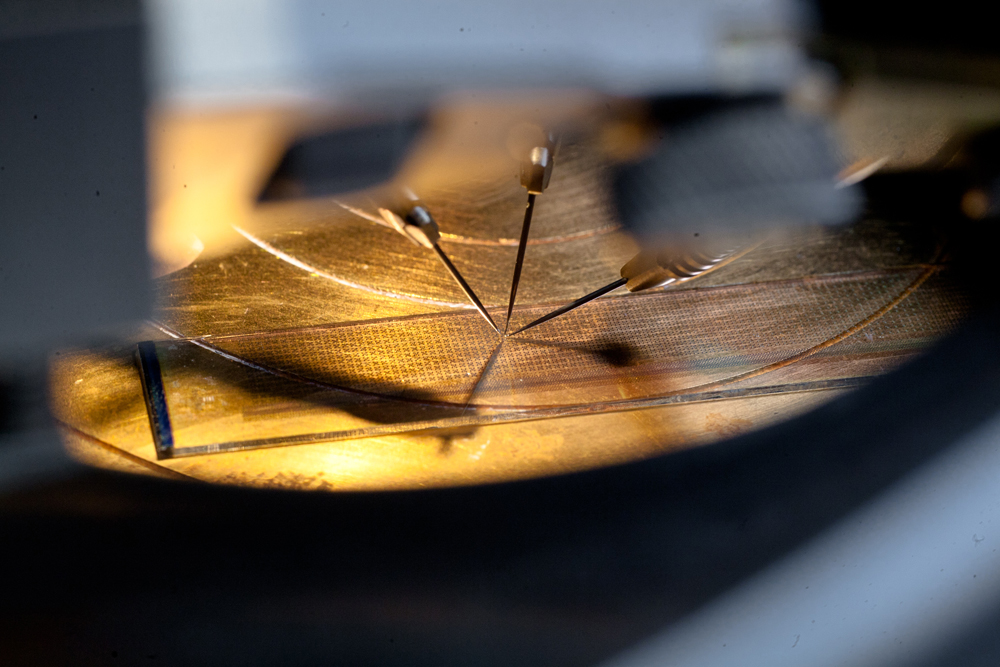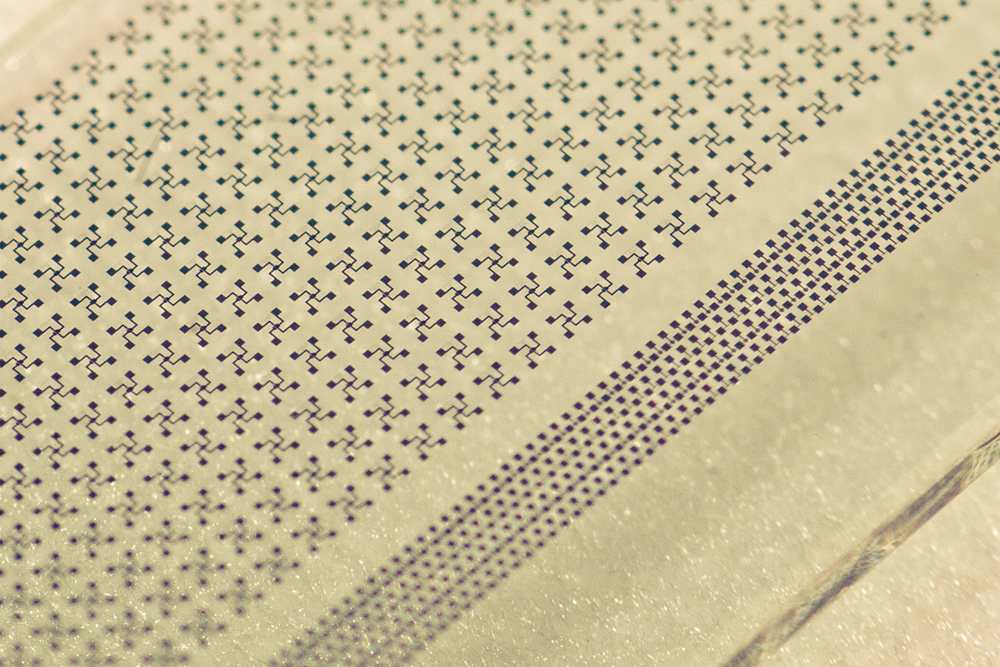New research could help make ‘roll-up’ digital screens a reality
March 12, 2014

Images of “sheets” of SGT’s (credit: University of Surrey)
Researchers from the University of Surrey and Philips have identified a new transistor design that could make flexible electronics such as roll-up tablet computers available in the near future.
As reported in a study published in Nature Scientific Reports (open access), they further developed their “Source Gated Transistor” (SGT) to work with next-generation digital circuits.
Previously, the researchers found that SGTs could be applied to many analog electronic designs, such as display screens. In the current study, researchers have now shown that SGTs can also be applied to next-generation digital circuits.
SGTs control the electric current just as it enters a semiconductor, which decreases the odds of circuit malfunction, improves energy efficiency, and keeps fabrication costs to a minimum. These properties make SGTs ideal for next-generation electronic devices, and could enable digital technologies to be incorporated into those built using flexible plastics or clothing textiles.

Images of ‘sheets’ of SGT’s (credit: University of Surrey)
These technologies may include ultra-lightweight and flexible gadgets that can be rolled up to save space when not in use, smart plasters that can wirelessly monitor the health of the wearer, low-cost electronic shopping tags for instant checkout without the need for queuing, and disaster prediction sensors for use on buildings in regions that are at high risk of natural disasters.
“These technologies involve thin plastic sheets of electronic circuits, similar to sheets of paper, but embedded with smart technologies. Until now, such technologies could only be produced reliably in small quantities, and that confined them to the research lab.
“With SGTs we have shown we can achieve some characteristics needed to make these technologies viable, without increasing the complexity or cost of the design.” said lead researcher Radu Sporea, Royal Academy of Engineering Research Fellow at the Advanced Technology Institute, University of Surrey.
Abstract of Scientific Reports paper
Ultra-large-scale integrated (ULSI) circuits have benefited from successive refinements in device architecture for enormous improvements in speed, power efficiency and areal density. In large-area electronics (LAE), however, the basic building-block, the thin-film field-effect transistor (TFT) has largely remained static. Now, a device concept with fundamentally different operation, the source-gated transistor (SGT) opens the possibility of unprecedented functionality in future low-cost LAE. With its simple structure and operational characteristics of low saturation voltage, stability under electrical stress and large intrinsic gain, the SGT is ideally suited for LAE analog applications. Here, we show using measurements on polysilicon devices that these characteristics lead to substantial improvements in gain, noise margin, power-delay product and overall circuit robustness in digital SGT-based designs. These findings have far-reaching consequences, as LAE will form the technological basis for a variety of future developments in the biomedical, civil engineering, remote sensing, artificial skin areas, as well as wearable and ubiquitous computing, or lightweight applications for space exploration.